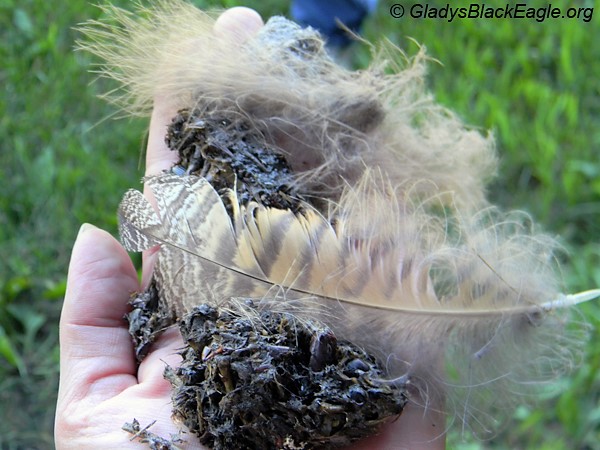Stories of Life Wrapped in Little Packages
Marla Mertz, Marion County Conservation

Owls are mysterious creatures to many of us. Why do we like owls so much? Only you can answer that for yourself, but owls do captivate the young and the old. Is it because owls are cute, fierce, are found worldwide, are the best natural rodent predator? Are we captivated by the dark and the winged ones that tend to the night?
Last month this website focused on our earliest of owl nesters in Iowa, their habitats and food preferences, and why they can be the earliest of nesters. Now, let’s raise your curiosity and take their food preferences and turn them into real life science, math, and writing opportunities.
Owls eat many different kinds of small prey and the fur and bones are all wrapped up in a tight little “mystery package” that are called pellets. Even though all raptors and other birds regurgitate pellets, an owl’s stomach acids are not quite as acidic as other birds. Owls tend to swallow their small prey whole, so the bones of the prey are not broken during the eating process.
Environmental educators may have their own name for pellets like ‘bird burps’ .

Many people, especially our youth, connect with stories of life in their community and like to be able to put real life science to task. Owl pellets can tell us the habitat preferences by where the pellet was found, food availability by identification of bones of animals eaten, and what prey is most abundant in the habitat (population dynamics). You may also find that when the pellet hits the ground it becomes an “ecosystem” in itself. Caterpillar droppings, larvae, moths, fungus may call the pellet home - what is actually living in an owl pellet?
Where might you find an owl pellet? Take a walk in a pine grove or a windbreak in the winter. Owls often roost within these groves for winter weather protection. Some people have owls that have taken up residence in a barn. If you are taking a walk and notice a lot of white-wash on the ground and/or the side of a tree, chances are that an owl has roosted in that tree. Search around the bottom of the trees and you may find one pellet, or you may find many. It is discouraged to go pellet hunting in owl nesting areas in January through March.

(Permission for use by Photographer, Pamela Underhill Karaz)
Owl pellets are considered sterile when leaving the bird’s mouth, but not once they hit the ground. Taking reasonable precautions to prepare for dissection, like wearing gloves and a mask, are quite important and also set the “scientist” mood. Washing hands and cleaning the work areas is important, as well. Safety first.
- Visit the International Owl Center for their owl pellet information!
You really don’t need expensive equipment. Here are a few ideas:
- If you know the location of where a pellet is found, find the area on a map,
- A pencil for journaling and tracing around the pellet,
- A ruler to measure the size of the pellet,
- A small scale to weigh the pellet,
- A toothpick is the essential dissection tool,
- A paper plate works well to contain your work, and
- Glue if you wish to glue the bones to a worksheet.

View the "Owl Pellet" album in Google Photos!
Please know that no matter how careful your owl pellet dissection is, it is very unlikely that you can put back together one whole prey skeleton. Here is a downloadable key for bone identification.
Here is another site with owl pellet info and items that can be purchased for a classroom activity.
Naturalists and others in your community may have posters, worksheets and other information available to use in the classroom or home school sites. It’s a favorite activity among curious naturalists. You can take the pellet dissection to any level that fits your educational needs or inquiring mind - it can be a fun backyard mystery or even a college thesis.
Here is another option - a virtual owl pellet dissection. This is a highly recommended link for teachers, students, or anyone with a curiosity.
Other informative links about owl pellets you may like:
published Friday, April 1, 2022



